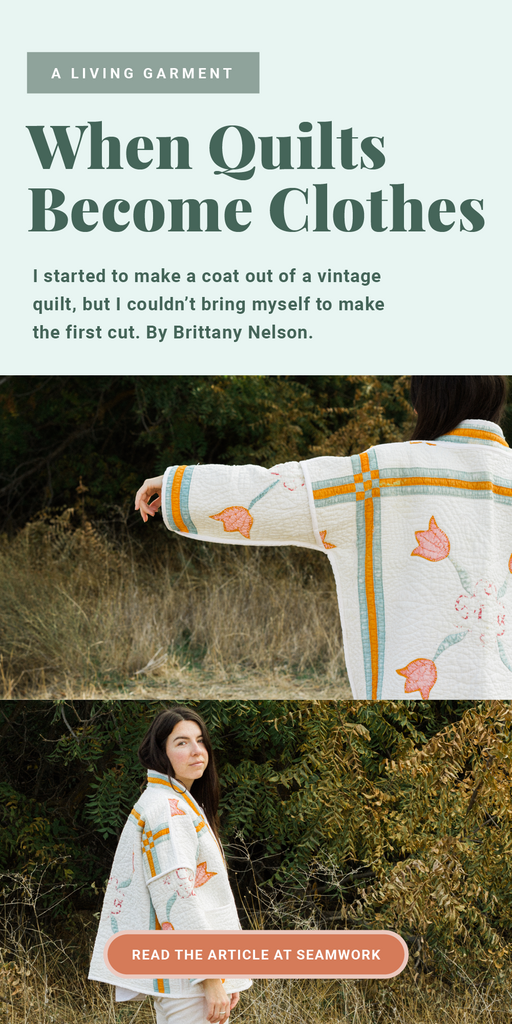The perfect vintage quilt on this earth came to be in my possession by complete serendipity. It is red and white, all hand-pieced curves and imperfect quilting, squishy and light, and it lay winking at me over the back of a chair in the front of an antique store. I'd been considering making a vintage quilt coat for some time, and here was the perfect source material, begging me to take it home. I didn't even look around the store that day, I just picked up the quilt and took it straight to the counter.
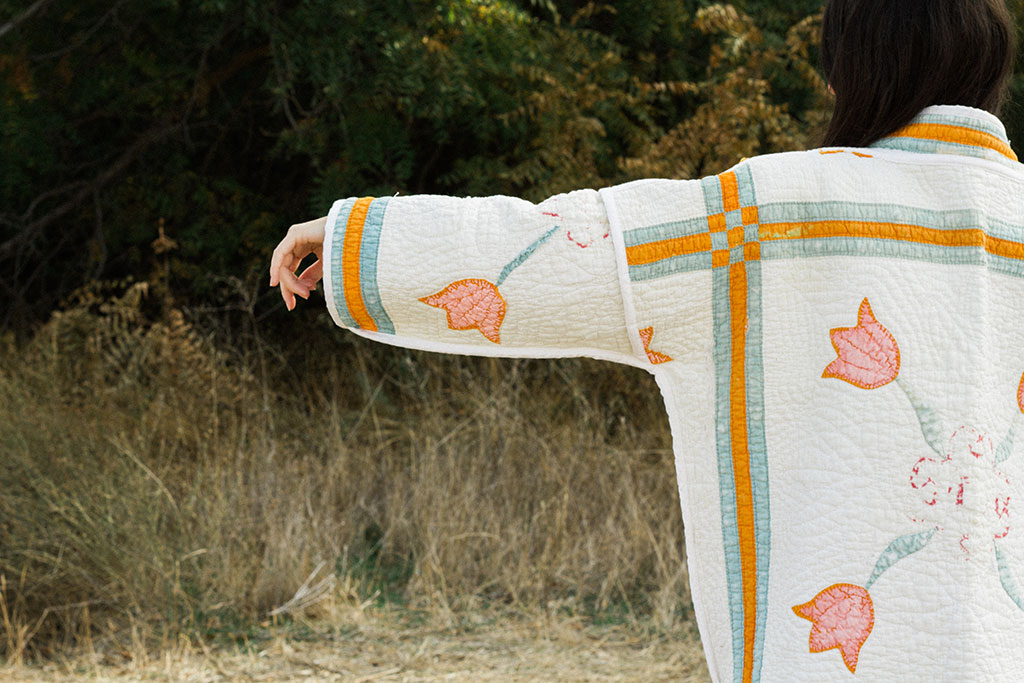
Part of the beauty of vintage quilts—and thus, coats made from vintage quilts—is their utter and remarkable uniqueness. These quilts are often beautiful, yes, but their stitches also contain hours of labor, years of comfort. They are ledgers of a life through time. Threads pull, colors fade in unpredictable ways, they accumulate patches in the places where hands and bodies wear them gossamer thin. In this way, they remember. In this way, they are living objects.
Is it ethical to cut apart an object as emotionally charged as a vintage quilt? Textile artist Grace Rother asked just that through a series of Instagram stories, and the range of responses was as varied as it was strong. Some felt it was a beautiful and thoughtful way to repurpose an unloved or unused old quilt, mentioning plans to turn family quilts or estate-sale finds into coats. Others balked at the idea of cutting apart someone's hard work in service of a trend. One responder asked, "Is it upcycling? Is it downcycling?" Another posited, "Seems like gentrification."
The Quilt Coat as Gentrification
As I planned my own vintage quilt coat, I considered how I could approach this project as a collaboration across time and space rather than as gentrification. In choosing a vintage textile, where is the line between responsible and irresponsible? If a quilt is for sale, I reasoned, it's fair game.
For three days, I stared at the red and white of my quilt smoothed across my living room floor. I ran my fingers over the curves, the quilting; I made a muslin; I oriented and reoriented my pattern pieces. I made another muslin and definitely paused to consider sharpening my scissors—anything to put off that first cut. I knelt along the edges of the quilt several times, but the thought of bringing blade to cloth was paralyzing.
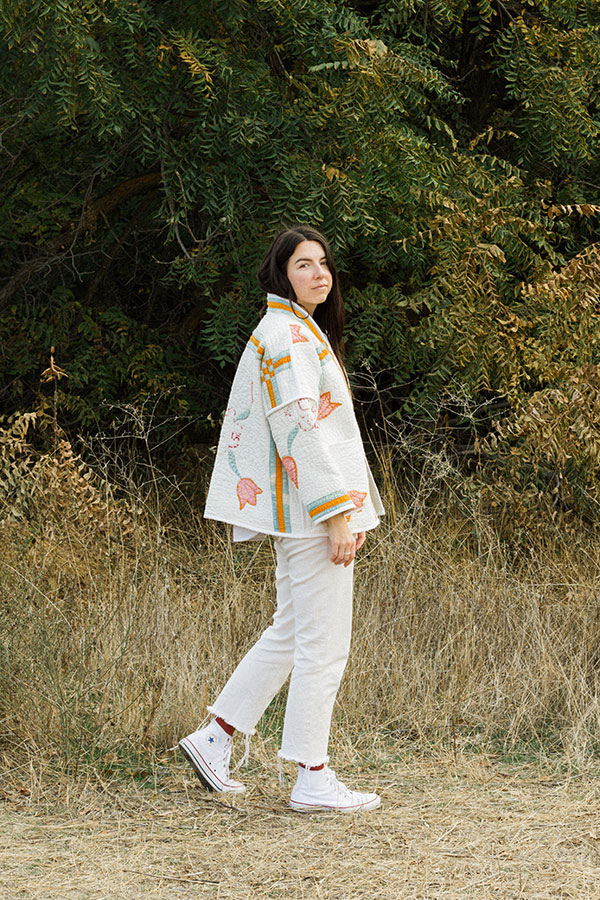
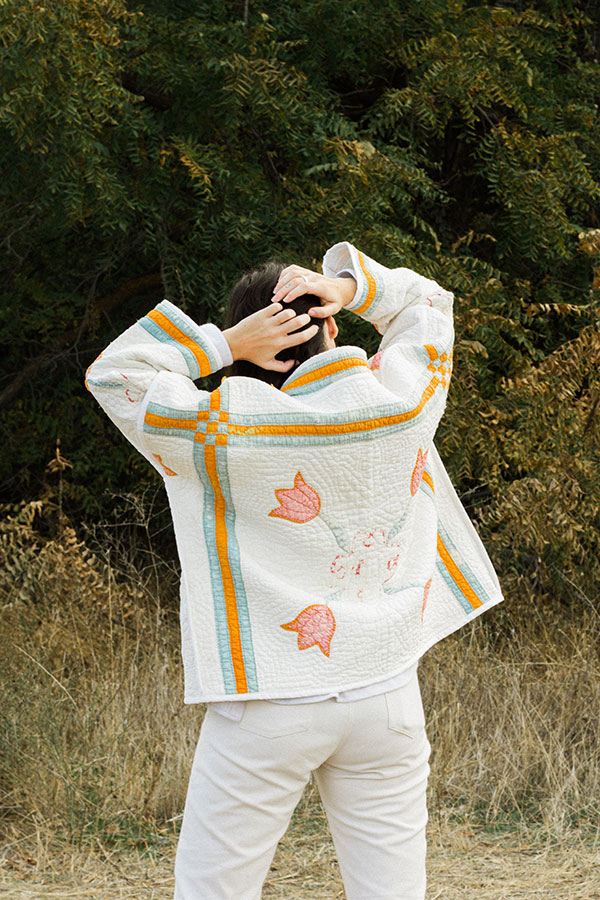
Why was I pushing myself to do something that felt so bad? And more to the point—why did the idea of cutting into the quilt feel bad at all?
Gentrification is about erasure. I thought I knew where my line was, what I was comfortable with, and what I was not. But when confronted with the opportunity, scissors in hand, I could not make the first cut. If quilts are living objects, then the red and white quilt had not yet reached the end of its life. In Instagram discussions, many people pointed out that they would be devastated if someone cut apart one of their quilts. I think sometimes we forget that quilters, sewists, makers of the past, they were probably much like us. They were creative, resourceful, and talented. They had voices, ideas. Cutting into that particular quilt felt like screaming over the voice of the original maker, an act of violence, of erasure.
The Quilt Coat as Collaboration
Quilts are not eternal objects. Unless preserved in a museum, time will eventually erase them all. They live for a generation or two before they move on, sometimes sold or trashed, sometimes sewn into the middle of another young quilt—as I said, we sewists are resourceful. There comes a moment in a quilt's life when it is too old, too worn to continue as a quilt, but not yet tattered beyond recognition.
This is where I find collaboration—a collaboration across time and space
The spirit of collaboration has become foundational in my feelings toward vintage quilt coats. In the same way that makers of the past were talented and creative like us, they were probably also excited by novel utilities and prone to experimentation. Just as we push fiber arts forward with our collective ideas, so too did our sewing foremothers.
We make quilts with an inherent purpose, but once that purpose is fulfilled, it's possible that we, as makers, would be glad to dedicate it to a new use. Since the owners of vintage quilts often aren't around to tell us when we can use a textile, I think it's best to let the quilt live out its life. Once it can't be a quilt anymore, then it can be something else.
With collaboration as my new guiding principle, I found a second, much weirder quilt—the one that would become my coat. It was tucked into the bottom of a hutch in the back of that same local antique store, "cutter quilt" scrawled across its paper tag.
At one time, the quilt's top was covered in appliquéd flowers: pink roses and orange tulips surrounded by blue and orange sashing. Now, the colors have bled, all the roses have fallen off—or been removed—and the orange tulips are covered with a coat of pink acrylic paint, crunchy and cracked. It badly needs mending in the few areas that are not covered in outright holes. It's perfect. This quilt is done being a quilt.
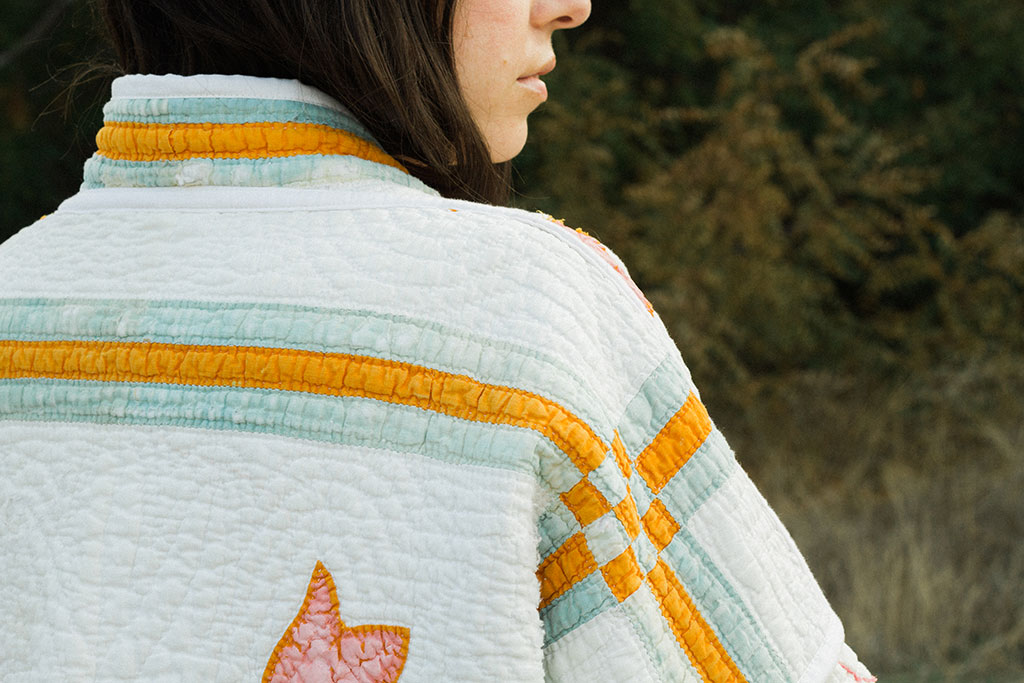
As I cut, I felt I was committing an act of transformation, not destruction—a sort of extreme mending, allowing this anonymous work of art to become something new. I imagine prolonging the maker's voice, raising my own in harmony.
I revel in speculation about the original quilter. Maybe this quilt was a gift to a friend, a daughter. Maybe her daughter, as a child secreted in her bedroom, had smoothed pink paint over the carefully stitched tulips late one night so her mother wouldn't see. Maybe her mother had cried in the quiet morning when she saw what had been done, all that precious labor now glossy and stiff under the foreign color. But maybe over the course of the next twenty years, it became that kind of darkly hilarious family lore, told over holiday dinners, in gasping breaths to a chorus of laughter. "Mom worked so hard on that quilt," she'd say, laughing, crying, leaning into the shared memory. Maybe this quilt is missed.
Of course, I can't know any of this for sure. What I do know is that someone, at some point, spent a lot of time and love on this beautiful, weird work of art, knowing full well it would not last forever. In the moment when their voice is fading, I feel gratitude for the opportunity to carry it with my own. Let this coat be a dedication to the makers who have come before me. My creativity is made richer by theirs. I will think of them fondly as I wrap myself in this soft treasure, not new exactly, but alive again.


